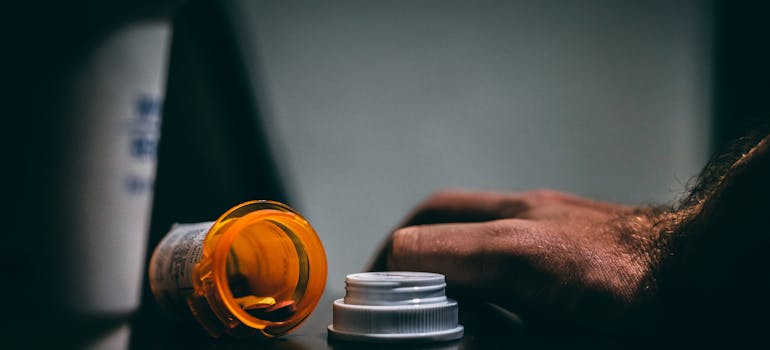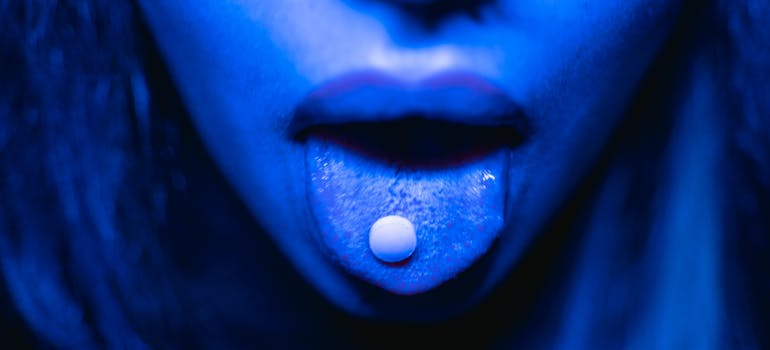Today, we’re exploring the concerning reality of commonly abused drugs among millennials, right here in West Virginia. As we uncover this important topic, we’ll highlight the significant role of rehabs in WV. From alcohol and marijuana to prescription drugs and synthetic substances, we’ll examine the trends and risks impacting our generation. Get ready to explore the facts and figures behind these troubling behaviors. It’s time to understand the challenges and find solutions together. Join us on this journey towards awareness and action.
Alcohol Abuse Among Millennials
Let’s talk about how millennials are drinking less alcohol. Recent studies show that while older millennials still drink moderately, younger ones are cutting back. For older millennials, about 5.9% drink often, similar to Generation X and Baby Boomers. However, younger millennials, only 2.4% drink often, indicating a decreasing trend in alcohol consumption.

This change could be due to millennials being more health conscious. They’re choosing lower-calorie drinks like hard seltzers and focusing on wellness trends. This shift in behavior suggests a growing awareness of the impact of alcohol on health. For those struggling with quitting alcohol, alcohol rehab centers in WV offer support and guidance to regain control and live a healthier life. You don’t have to go through recovery alone, with a trained team of professionals, your journey can be a lot less bumpy.
Risks of Excessive Alcohol Consumption
People underestimate the negative effects alcohol can have on your mental and physical wellbeing. Here are just a few of the dangers associated with excessive alcohol consumption:
- Impaired judgment leading to accidents and injuries
- Increased risk of long-term health issues such as liver damage and heart disease
- Negative impact on mental health, including depression and anxiety
- Relationship problems and social consequences
- Legal issues, such as DUIs and legal penalties
- Risk of addiction and dependency, leading to difficulty in quitting or cutting back
- Financial strain due to spending on alcohol and related expenses
Marijuana Use Among Millennials
Marijuana is undoubtedly one of the most common drugs used by young adults. The National Institute on Drug Abuse reports historic highs in marijuana and hallucinogen use among young adults aged 19 to 30 in 2021. Past-year, past-month, and daily marijuana use have reached the highest levels ever recorded since monitoring began in 1988.
Furthermore, a report by CFAH reveals that 51% of millennials have tried marijuana, with 20% of them smoking weed. Despite perceptions of marijuana as a safe drug, there are concerns about potential abuse and its impact on health and well-being. For those struggling, seeking support from a marijuana rehab center can provide guidance and assistance.

Risks Associated with Marijuana Consumption
Although quite popular and even legal in medical aspects, marijuana, if not used under medical supervision, has many devastating impacts on your wellbeing:
- Impaired cognitive function and memory
- Increased risk of mental health issues, including anxiety and psychosis
- Negative impact on lung health from smoking
- Legal consequences, especially in areas where marijuana is not legalized
- Negative effects on academic or work performance
Prescription Medication Misuse
Prescription drug abuse is a major concern, especially among millennials. According to recent statistics, young adults aged 18 to 25 are the heaviest users of prescription drugs for non-medical purposes. Annually, approximately 16 million Americans over the age of 12 misuse prescription drugs, with millennials constituting a significant portion of this number.
Painkillers are the most commonly misused prescription drugs, with 9.7 million annual abusers, making up 59.5% of all prescription drug abusers. Opioids alone are abused by 9.3 million people, representing 57.1% of prescription drug abusers. Sedatives are misused by 5.9 million individuals, and stimulants by 4.9 million. It’s estimated that about 12% of prescription drug abusers are addicted, totaling around 2 million people. Among millennials, over 12% are addicted to drugs, surpassing the 9.4% drug use prevalence across all generations.
Dangers of Prescription Drug Abuse
If you are using prescription drug without medical supervision, you should be aware of the dangers associated with misuse of prescription medications:
- Increased risk of addiction and dependency
- Adverse effects on physical and mental health
- Potential for overdose and death
- Legal consequences, including criminal charges
- Negative impact on relationships and social life
For those struggling with prescription drug abuse, seeking medication assisted treatment West Virginia rehabs offer can provide comprehensive support and assistance on the path to recovery.

Usage Patterns of Synthetic Drugs
Synthetic drugs and designer substances have become one of the more commonly abused drugs among millennials in recent years. According to the Global Synthetic Drugs Assessment 2020 by the United Nations Office on Drugs and Crime (UNODC), the COVID-19 pandemic has significantly impacted the sale of synthetic drugs, highlighting trends in trafficking and use. This includes substances like methamphetamine, amphetamine, “ecstasy,” and new psychoactive substances.
Moreover, a study published by the Journal of Studies on Alcohol and Drugs revealed a concerning trend. From 2006 to 2015, drug overdoses among millennials increased by nearly 20%, resulting in 36,422 fatalities among American teens and young adults. These statistics show the urgent need for greater awareness and intervention to address the growing epidemic of synthetic drug abuse among millennials.
Health Risks of Synthetic Drug Use
The use of synthetic drugs and designer substances among millennials poses serious risks to their health and well-being. Let’s delve into the dangers associated with these substances and understand the potential consequences:
- Increased risk of overdose and death due to unpredictable potency and composition of synthetic drugs.
- Adverse effects on physical health, including cardiovascular problems, seizures, and respiratory issues.
- Negative impact on mental health, leading to anxiety, paranoia, hallucinations, and psychosis.
- Social and behavioral risks, such as impaired judgment, risky sexual behavior, and violence.
- Addiction and dependency, with synthetic drugs often being highly addictive and difficult to quit.
Party Culture and Drug Use
Exploring how party drugs fit into the nightlife scene for millennials shows a fascinating mix of socializing and substance use. Millennials often have their own style of partying, which might involve hitting up pubs, indulging in alcohol, and sometimes mixing drugs. Meanwhile, Generation Z tends to approach partying more cautiously, preferring safer activities and focusing more on social media for fun.
When it comes to millennials and drug use trends, they stand out for their use of prescription opioids and painkillers, alongside the usual alcohol and marijuana. This reflects a broader shift in attitudes toward partying and drug use, with more emphasis placed on being moderate and understanding the risks involved.
Risks Associated with Party Drug Consumption
Partying among millennials often involves the use of drugs alongside alcohol, presenting various risks. Here’s what to consider:
- Increased risk of accidents and injuries due to impaired judgment and coordination.
- Potential for overdose or adverse reactions to substances like cocaine or MDMA (Ecstasy).
- Long-term health consequences, including addiction and mental health issues.
- Legal ramifications, as possession of illegal drugs can lead to criminal charges.
- Higher susceptibility to engaging in risky behaviors, putting oneself and others in danger.
Psychedelics Usage Among Millennials
The interest in psychedelics among millennials has grown sharply in recent years. In 2021, marijuana and other hallucinogen use among 19 to 30-year-olds hit an all-time high. Also, after a dip during the pandemic, marijuana vaping and binge drinking both returned to previous levels. Studies show that over 5.5 million U.S. adults used hallucinogens in 2019, with a notable rise in LSD use among 18 to 25-year-olds.
The use of non-LSD hallucinogens almost doubled among young adults from 2018 to 2021. During the COVID lockdowns, more college students and young adults reported using psychedelics compared to 2017. For those seeking help, inpatient drug rehab in WV offers services to address these challenges.

Understanding the Risks of Psychedelic Use
Using psychedelics carries various risks that individuals should be aware of. Here are some key dangers:
- Increased risk of experiencing negative psychological effects, such as anxiety, paranoia, and hallucinations.
- Potential for triggering underlying mental health conditions or exacerbating existing ones.
- Risk of accidents and injuries due to impaired judgment and altered perception of reality.
- Possibility of experiencing a “bad trip,” characterized by intense fear, confusion, and distress.
- Long-term effects on cognitive function and memory, particularly with frequent or heavy use.
Vaping Trends Among Millennials
Apart from the popular drugs abused by millennials we’ve talked about, vaping has become increasingly prevalent among millennials. Recent studies reveal that in 2022, approximately 2.55 million U.S. middle and high school students reported current e-cigarette use. Among them, 14.1% of high school students and 3.3% of middle school students were involved. Flavored e-cigarettes were preferred by 85% of these youth, with over half using disposable ones.
Among adults in 2021, 4.5% were current e-cigarette users, with the highest usage observed among those aged 18–24, at 11.0%. For adults aged 25–44, the usage rates were 7.9% for men and 5.1% for women. Reports from 2015 and 2018 suggest that over 20% of adults aged 18-29 have tried e-cigarettes at least once, indicating a significant uptake of vaping products among millennials.
Health Risks of Vaping and E-Cigarette Use
Vaping has surged in popularity, especially among millennials, but it’s crucial to understand the potential health risks associated with these devices. Here are some key dangers:
- Increased risk of lung damage and respiratory issues from inhaling harmful chemicals.
- Negative impact on cardiovascular health, raising the risk of heart disease.
- Potential for addiction and nicotine dependency, particularly among youth.
- Adverse effects on brain development, impairing cognitive function.
- Respiratory infections and lung diseases caused by vape aerosols.
- Long-term health consequences like lung cancer and COPD from prolonged use.

Social Media Influence on Substance Abuse
Exploring the role of social media in promoting drug culture sheds light on substance abuse patterns among millennials. Social media platforms play a significant role in normalizing and glamorizing drug use. Through posts, images, and videos, drug use is portrayed as trendy and acceptable, influencing behaviors and creating peer pressure.
Moreover, social media simplifies access to information on obtaining and using drugs, perpetuating the cycle of substance abuse. Continuous exposure to drug-related content can desensitize individuals to the risks and consequences associated with drug use, making it challenging to recognize and address the problem. Therefore, it’s important to raise awareness about the negative impact of social media on drug culture and promote healthy behaviors and alternatives.
The Positive Impact of Social Media on Mental Health
Social media platforms are increasingly being used to destigmatize mental health issues and promote individual therapy for addiction. Through inspiring stories, informative posts, and supportive communities, social media helps break down barriers and encourages open conversations about mental health challenges.
Additionally, platforms like Instagram and Twitter provide access to resources and support networks, making it easier for individuals to seek help and connect with licensed therapists specializing in addiction treatment. By leveraging the power of social media, we can foster a culture of acceptance, support, and accessibility in addressing mental health and addiction concerns.

Strategies to Address Substance Abuse
Targeted prevention and harm reduction strategies are used to address drug use habits of the millennial generation. Educational campaigns tailored to millennials can raise awareness about the risks associated with commonly abused substances. Providing accessible resources, such as online support groups and hotlines, empowers individuals to seek help when needed.
Offering alternative activities and stress-management techniques, such as art therapy rehabilitation, can also reduce reliance on drugs. Additionally, promoting responsible partying culture and providing designated driver programs can prevent accidents related to substance use.
Addressing Commonly Abused Drugs Among Millennials
It’s evident that millennials are facing challenges with substance abuse, including alcohol, marijuana, and prescription drugs. However, there’s hope in the trends showing a decrease in alcohol consumption among younger millennials, reflecting a shift towards healthier habits. This generation’s focus on health and wellness is encouraging, but there’s still work to be done to combat the misuse of drugs. If we keep promoting education, providing access to treatment, and supporting prevention efforts, we can create a safer and healthier environment for millennials.



